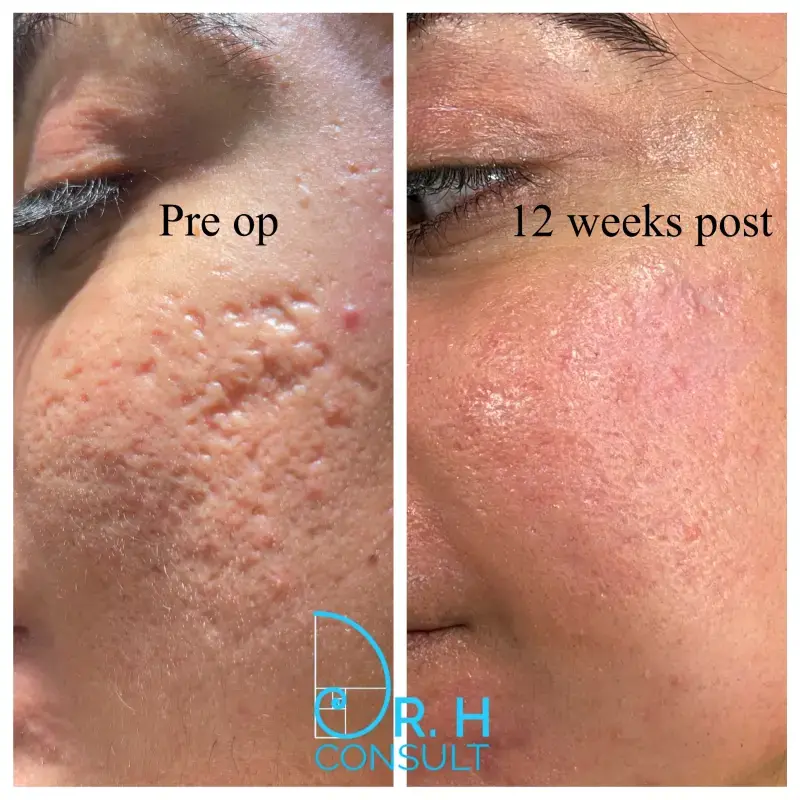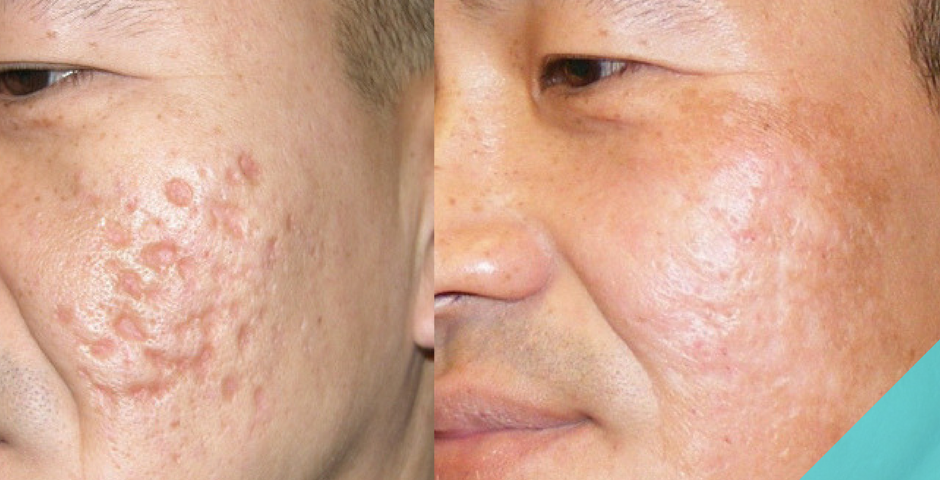Advanced Acne and Acne Scars Treatment: Bid Farewell to Blemishes
Advanced Acne and Acne Scars Treatment: Bid Farewell to Blemishes
Blog Article
Recognizing the Numerous Skin Disease and Effective Therapy Choices for Acne Scars
Acne scars stand for a complex interplay of skin problems that dramatically influence individuals' self-confidence and general skin health. As we explore the landscape of acne mark monitoring, it ends up being obvious that the trip towards more clear skin might involve more than simply topical solutions.
Sorts Of Acne Marks
Acne scars can manifest in numerous types, each needing details therapy techniques. Both main classifications of acne scars are hypertrophic and atrophic marks. Atrophic scars are characterized by a loss of cells, resulting in depressed locations on the skin. These scars are more categorized right into 3 subtypes: ice pick marks, which are deep and slim; boxcar marks, which are larger and have well-defined edges; and rolling marks, which produce a wave-like appearance because of unequal skin appearance.
In contrast, hypertrophic marks arise from an overproduction of collagen throughout the recovery procedure, causing elevated locations on the skin. These marks are commonly firm and can vary in shade, often showing up red or darker than the surrounding skin.

Reasons For Acne Scarring
Marking takes place as a result of the body's all-natural healing feedback to inflammation and injury brought on by acne sores. When acne types, it sets off an inflammatory feedback, resulting in the release of different cytokines and development variables that promote recovery. Nevertheless, this process can occasionally result in extreme cells development or poor repair work, leading to scars.
The primary reasons for acne scarring consist of the intensity of the acne itself, period of the lesions, and individual skin types. Severe inflammatory acne, such as cysts and nodules, is a lot more likely to result in scarring as a result of deeper tissue damage. Additionally, incorrect handling of acne lesions, such as squeezing or choosing, can aggravate tissue injury and swelling, increasing the possibility of scarring.
Hereditary proneness also plays a substantial duty; individuals with a household history of scarring are at a greater threat. Skin type and shade can affect scar development, as darker skin tones may experience post-inflammatory hyperpigmentation, while lighter skin might develop atrophic scars.

Treatment Alternatives for Scarring
Effective treatment options for acne scarring differ depending upon the kind and extent of the marks. Generally classified into atrophic, hypertrophic, and keloid scars, these problems require tailored methods for optimal outcomes.
For atrophic scars, which are characterized by a loss of cells, therapies such as chemical peels, microdermabrasion, and laser therapy are frequently used. These approaches promote skin revival and boost collagen manufacturing, consequently improving skin appearance. Subcision, a minimally invasive procedure, can also be reliable by separating fibrous bands beneath the skin.
Keloid and hypertrophic scars can be more challenging to treat. Options include corticosteroid injections to decrease inflammation and flatten the marks. skin rejuvenation treatments. In many cases, cryotherapy or laser treatment might be suggested to decrease their look
Surgical choices are readily available for severe scarring, where excision or skin grafting may be necessary. It's essential for individuals to seek advice from with a skin doctor to analyze their certain scar kind and talk about the most suitable treatment plan. Combining multiple treatments usually produces the most effective results, guaranteeing that each individual's one-of-a-kind skin problem is attended article source to effectively.
Natural Home Remedy and Natural Solutions
Natural solutions and home remedies can give an available approach for individuals looking for to boost the look of acne marks. Various active ingredients discovered in the home cooking area have actually shown prospective benefits in improving skin texture and promoting healing.
One preferred remedy is aloe vera, understood for its anti-inflammatory and relaxing residential properties. Applying fresh aloe vera gel directly onto the scars can aid boost skin hydration and reduce redness. Likewise, honey has all-natural antibacterial and moisturizing qualities that can assist in mark recovery. It can be used as a mask, left on for 30 mins before rinsing off.
One more reliable alternative is lemon juice, which acts as an all-natural exfoliant and can lighten hyperpigmentation. However, it must be utilized cautiously, as it may create photosensitivity. Oat meal masks are likewise useful; their gentle peeling can assist eliminate dead skin cells while calming inflammation.
Essential oils, such as tea tree oil and lavender oil, can further sustain scar recovery because of their antimicrobial residential or commercial properties. It is vital to do a spot examination before applying any kind of treatment to ensure there are no adverse responses. These all-natural services can be a complementary method in the journey to lessen acne marks.
Protecting Against Future Scarring
Embracing a proactive approach to skincare can significantly lower the threat of establishing future acne marks. Routine cleansing, exfoliation, and hydration can assist preserve skin health and wellness and protect against clogged pores.
Additionally, preventing the lure to choose or squeeze acne sores is vital, as this can cause swelling and subsequent scarring. Instead, individuals my sources ought to concentrate on applying topical therapies that promote healing and minimize inflammation. Components such as salicylic acid, benzoyl peroxide, and retinoids are known for their efficacy in handling acne and lessening scars.

Last but not least, preserving a healthy and balanced diet abundant in antioxidants and remaining hydrated supports skin regrowth. By carrying out these safety nets, individuals can dramatically reduce their danger of future scarring and promote total skin wellness.
Verdict
Finally, a detailed understanding of acne marks, including both hypertrophic and atrophic kinds, is important for efficient therapy techniques. Customized interventions, consisting of specialist treatments and natural remedy, can dramatically boost skin look and structure. Preventive steps also play an essential function in decreasing future scarring. Appointment with a dermatologist continues to be necessary to devise tailored approaches that consider specific skin types and scar extent, eventually enhancing the efficacy of scar monitoring strategies.
Acne marks represent a complex interaction of skin problems that significantly impact individuals' self-worth and overall skin health. The 2 primary categories of acne marks are hypertrophic and atrophic marks. These marks are more classified right into three subtypes: ice choice scars, which are narrow and deep; boxcar scars, which are bigger and have well-defined sides; and rolling scars, which create a wave-like look due to unequal skin structure.
An extensive examination with a skin the original source doctor can assist establish the most proper intervention, taking right into account the person's skin type, scar seriousness, and general skin health and wellness.
Examination with a skin doctor stays vital to design individualized techniques that think about private skin kinds and scar seriousness, eventually improving the efficacy of scar monitoring strategies.
Report this page